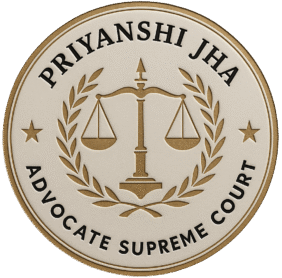
In a democracy governed by the Constitution, your rights are not just symbolic—they’re enforceable. One of the most powerful tools available to citizens when those rights are violated is the writ petition. But when exactly can you skip the lower courts and go straight to the High Court? As a practicing lawyer, I often help clients navigate this crucial question.
⚖️ What is a Writ Petition?
A writ is a formal written order issued by a constitutional court (High Court or Supreme Court) directing a public authority to act or refrain from acting in a particular way. Writs are used to enforce fundamental rights under Article 226 (High Court) and Article 32 (Supreme Court) of the Indian Constitution.
Unlike ordinary lawsuits, writs are designed to provide quick relief against government injustice, inaction, or illegality.
📌 When Can You File a Writ Petition in the High Court?
You can directly approach the High Court under Article 226 in the following situations:
- Violation of Fundamental Rights
If your right to life, equality, liberty, or protection from arbitrary action is infringed. - Unlawful Government Action
If a government authority or public officer has acted without jurisdiction, or in violation of the law. - Refusal to Perform Legal Duty
For example, if a passport office refuses to issue or renew a passport despite fulfilling all requirements. - Against Quasi-Judicial Bodies
Orders of tribunals (like CAT, RERA, or Consumer Commissions) can be challenged if they violate natural justice. - Public Interest Matters
Cases affecting a group of people or society at large may be brought under Public Interest Litigation (PIL).
🛠️ Types of Writs You Can File
- Habeas Corpus – “Produce the body”
Filed when someone is illegally detained or missing. - Mandamus – “We command”
Filed to compel a public authority to perform a legal duty. - Certiorari – “To be certified”
Filed to quash an illegal order passed by a lower authority. - Prohibition – “To forbid”
Prevents a subordinate court or tribunal from overstepping its jurisdiction. - Quo Warranto – “By what authority”
Challenges the legal right of a person to hold a public office.
🧭 Procedure to File a Writ Petition
- Draft a clear and precise petition outlining your grievance and supporting facts
- Attach all relevant documents and evidence
- Submit to the jurisdictional High Court
- The court may issue notice to the respondent and seek a reply
- If urgent, interim relief may be granted (like a stay order)
👩⚖️ Advocate’s Insight
“Writ petitions are the lifeline of constitutional protection. Whether it’s an unlawful dismissal, denial of a license, or abuse of police power—direct access to the High Court offers real-time relief. The key lies in precise drafting and clear articulation of rights.”
— Advocate Priyanshi Jha
💡 Pro Tip:
Writ jurisdiction is discretionary. The High Court will not entertain trivial, private, or purely contractual disputes unless public law elements are involved.
📞 Need Help Filing a Writ?
If your fundamental rights are being denied or a public authority is acting unfairly, I can help you draft and file a compelling writ petition that protects your legal standing.
👉 Contact Advocate Priyanshi Jha for expert legal support.

